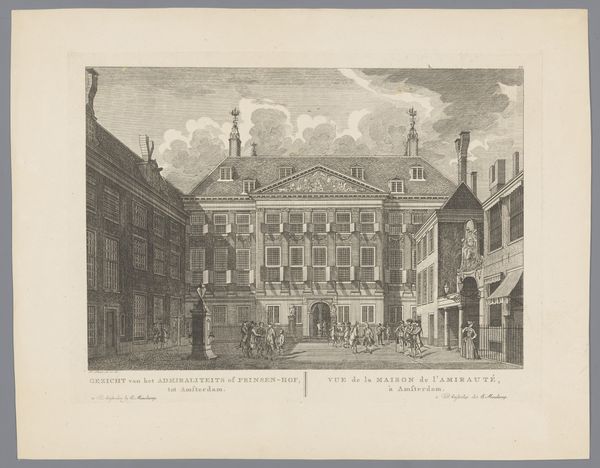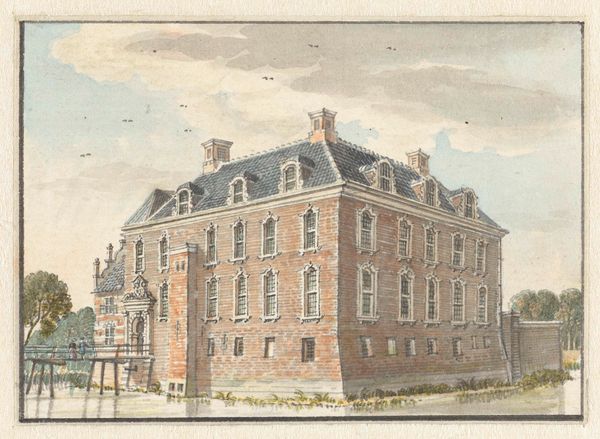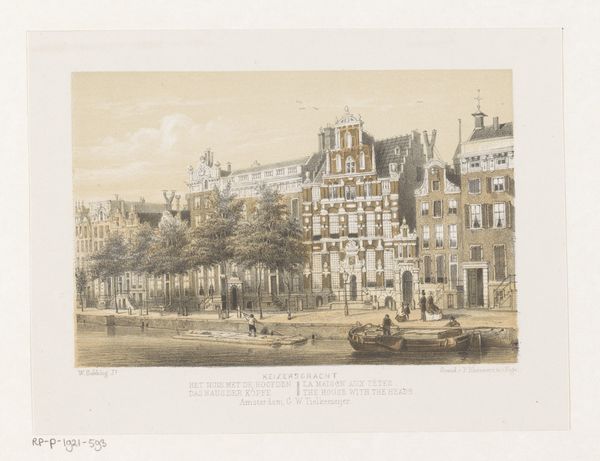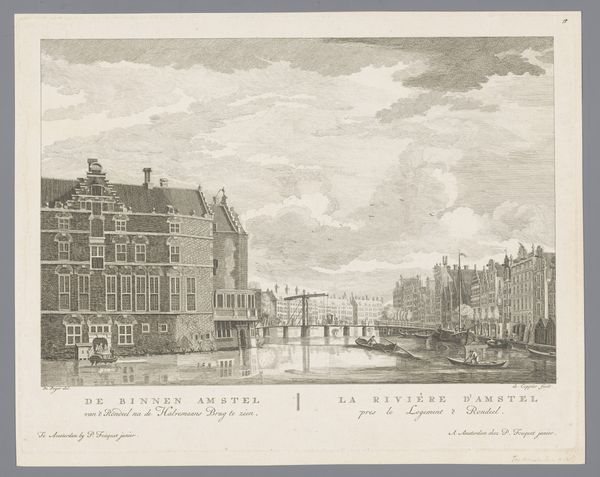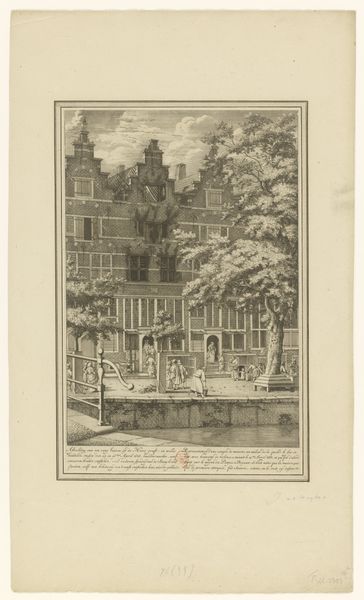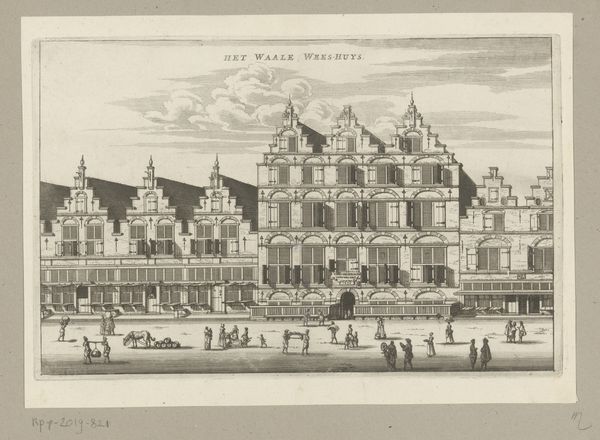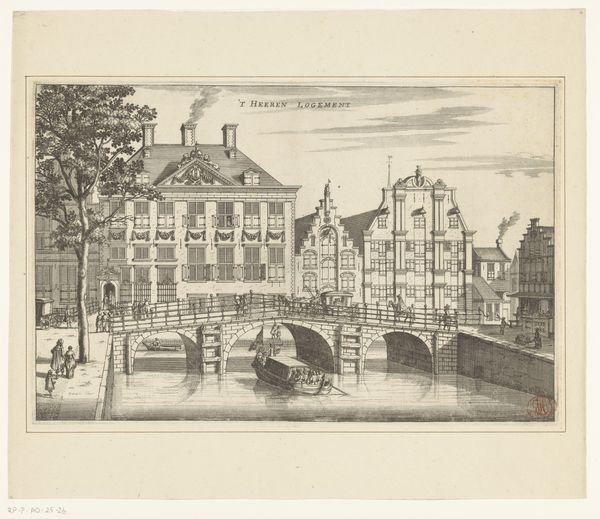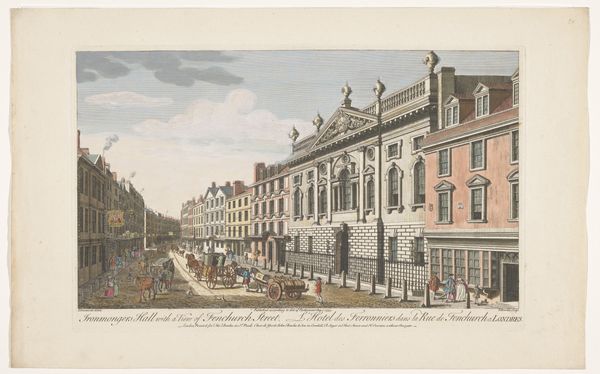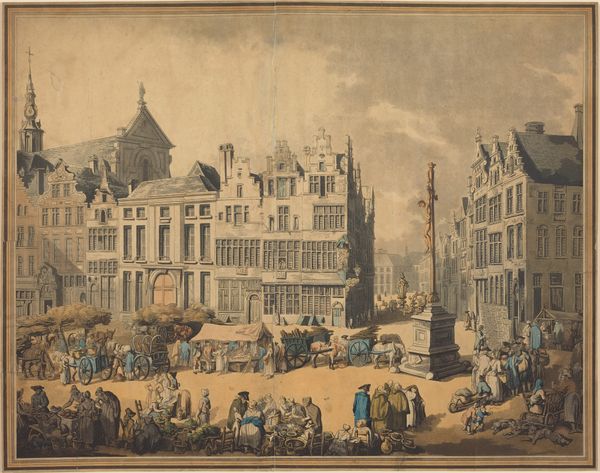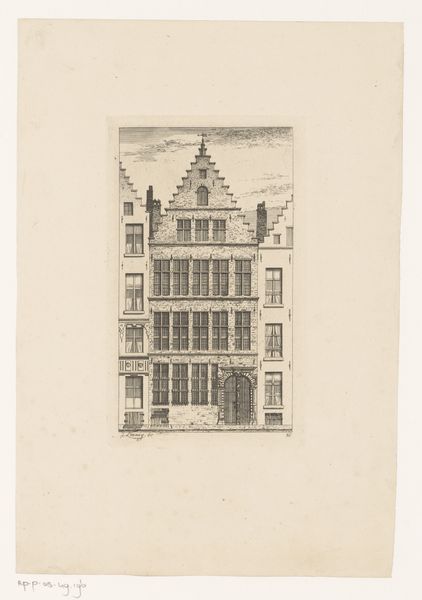
Huizen op de Keizersgracht, gesloopt in 1787 voor de bouw van Felix Meritis c. 1800 - 1900
0:00
0:00
painting, watercolor
#
dutch-golden-age
#
painting
#
watercolor
#
cityscape
#
watercolour illustration
#
realism
Dimensions: height 318 mm, width 269 mm
Copyright: Rijks Museum: Open Domain
Curator: Gerrit Hulseboom’s watercolour, titled “Huizen op de Keizersgracht, gesloopt in 1787 voor de bouw van Felix Meritis”, gives us a glimpse into a specific moment of urban change in Amsterdam, sometime around 1800-1900. Editor: My first impression is one of muted melancholy. The colour palette feels restrained, almost sepia-toned, evoking a sense of loss, fitting perhaps given the painting's focus on buildings soon to be demolished. Curator: Exactly. Beyond the muted colours, the image possesses a layered symbolism. Note the facades of the buildings—the stylistic vocabulary of Dutch Golden Age architecture reflects a certain ambition and commercial drive from the past. Even the wisps of smoke rising could represent industry and enterprise. Editor: And the demolition itself speaks volumes, doesn't it? It marks the end of an era and the onset of modernisation and progress. This feels less like a neutral cityscape and more like a statement about transformation and who benefits from it. Was the displacement of the original inhabitants considered in this march toward modernity? Curator: Certainly, urban renewal rarely happens in a vacuum. Hulseboom's work, however, primarily documents the architectural and aesthetic elements. Watercolours have a fragile quality, underscoring how even seemingly solid structures can be impermanent. It's interesting how the choice of material enhances the narrative of change and decay. Editor: I agree. Watercolour, almost inherently nostalgic, used here captures not just a physical place, but also a transient moment in the city’s narrative. Those figures clustered on the canal side appear diminutive, overshadowed by the imposing architecture that’s on its way out. Are they bystanders or perhaps even witnesses to a significant loss of cultural memory? Curator: That is a great point, this transition period of what used to be versus what will become represents how culture is always flowing. There are the tangible changes in urban expansion which have the capacity to both threaten and celebrate those lost identities. Editor: Reflecting on this artwork, I’m left contemplating what "progress" truly signifies, and at whose expense it often comes. Curator: It becomes a meditation on progress, inviting us to contemplate what is lost in the name of development, even when what remains becomes part of the urban identity itself.
Comments
No comments
Be the first to comment and join the conversation on the ultimate creative platform.
